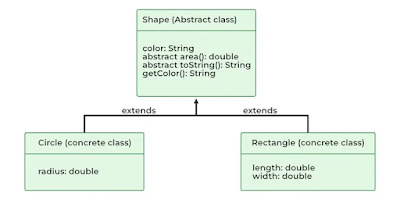Software Engineering Principles (By Analogy)
Welcome to the debut of the Low Level Bunker! Your input matters, so don't hold back—tell me what you think. In this post, we will talk take a look of some of the most important software engineering principles.
1. Single Responsibility Principle: Each class should have only one responsibility.
For the Single Responsibility Principle, think of a Swiss Army knife. Each tool serves a specific purpose, like cutting, screwing, or opening bottles.
2. Open-Closed Principle: Classes
should be open for extension, but
not modification.
Like a fridge, it's open for putting food in it but not for modifying it:
you don't change its door or paint it all over. Open for extension, not
for modification.
3. Liskov Substitution: Subtypes must be replaceable for their supertypes.
4. Interface Segregation Principle: Split interfaces into specific ones, ensuring clients only access relevant methods.
5. Dependency Inversion: High-level modules should not depend on low-level modules. Both should depend on abstractions.
In a pizza, you can replace any slice with another type of pizza slice
and still have a complete pizza. Similarly, in code, a subclass should be
able to replace its parent class without affecting the behavior of the
program, just like swapping pizza slices without changing the overall
meal.
4. Interface Segregation Principle: Split interfaces into specific ones, ensuring clients only access relevant methods.
Picture a supermarket with clearly labeled sections: one for sugar cookies,
another for round cookies, and yet another for star-shaped cookies. Each
section caters to specific preferences, ensuring that customers only access
the types of cookies they're interested in, in a quick way.
5. Dependency Inversion: High-level modules should not depend on low-level modules. Both should depend on abstractions.
Consider a corporate hierarchy, where junior employees shouldn't rely
directly on senior executives for guidance. Instead, both juniors and
seniors should depend on the CEO, the ultimate authority and we say
the CEO is abstract because it's rarely involved in day-to-day
operations.
- Law of Demeter: Limit coupling between objects.
Imagine you're at a coffee shop. Instead of asking the cashier to pass a
note to the barista detailing your specific coffee order, you simply
tell the cashier directly. This way, there's less back-and-forth
communication and everyone can focus on their respective tasks
efficiently.
- Abstraction: Hide implementation details.
Abstraction is like driving a car without knowing how the engine
works. You focus on using the steering wheel, pedals, and gears,
abstracting away the complexities of combustion, pistons, and gears
under the hood. Similarly, in software, users interact with simplified
interfaces, unaware of the details running behind the scenes, making all
more intuitive.
Picture a symphony orchestra where each musician plays their part in
perfect harmony, following the conductor's lead. Just as consistency
ensures uniformity in music, it maintains coherence and standardization
across systems.
- Encapsulation: Restrict access to certain components.
Imagine a safe deposit box: it securely holds valuable items, and only
authorized individuals with the
right key can access its contents.
- Principle of least astonishment: Keep things intuitive and obvious.
Picture walking up to an elevator button expecting it to be on the
right, as usual. But today, it's on the left!
Avoid surprises by ensuring your code behaves and looks as
expected, following the Principle of Least Astonishment.
- Refactoring: Restructure code without changing its behavior.
Think of refactoring as renovating a house. You update its structure,
improve its layout, and fix any flaws, all without changing it's purpose
: being a shelter.
This house got refactored!
- Optimization: Avoid optimizing prematurely, avoid pessimizing prematurely.
Imagine yourself building a house. You don't start by
painting the walls before laying the foundation or by throwing random
materials together. Premature optimization is like painting those walls
too soon—it ties you to a pattern that may not be suitable in the long
run. Pessimizing prematurely leads to a structure that's unmaintainable,
ultimately forcing you to start over.
- Incremental Development: Build and refine software incrementally.
Think of it like building a LEGO set, piece by piece. You start with the
foundation, adding bricks one by one until the structure takes shape.
Similarly, in software development, you gradually add and refine features,
building upon each other to create a robust system. Because if you don't:
it's harder to identify issues, you end up with a monolithic inflexible
unmaintainable codebase and you can't change it ...
- Polymorphism: Use a single interface to represent multiple types.
It's like a universal remote control that can operate various devices. Just
as the remote has different buttons for different functions, polymorphism
allows a single interface to handle multiple types of objects, making it
versatile and efficient.
- Single Source of Truth: Store data in a clear place.
Imagine a library where all books are cataloged in one index. This index
serves as the single source of truth for finding any book in the library.
Similarly, in software, storing data in one central location ensures
consistency and reliability.
- Pareto Principle: 80% of outcomes results from 20% of causes
Picture a garden where 20% of the plants consume 80% of the water and
nutrients. Similarly, in software development, 20% of the features often
account for 80% of the usage. The Pareto Principle reminds us to focus on
the vital few rather than the trivial many.
- Separation of Concerns: Modularize + Encapsulate. Divide the program into logical units.
Think of it as organizing a toolbox. You wouldn't store your hammers with
your screwdrivers; each tool has its designated compartment. Likewise,
separating concerns in software keeps different aspects of functionality
isolated, making it easier to maintain and update.
Questionnaire!
Miscellaneous Tips:
- Use version control, always.
- Understandability comes first.
- Write const by default. Make it an habit.
- Prefer composition than inheritance, to avoid coupling.
Related Links:
As we conclude this post in the Low Level Bunker, feel free to stay by the
cozy fire. The bunker's always open for your return. Happy coding, and until
next time!
















Comments